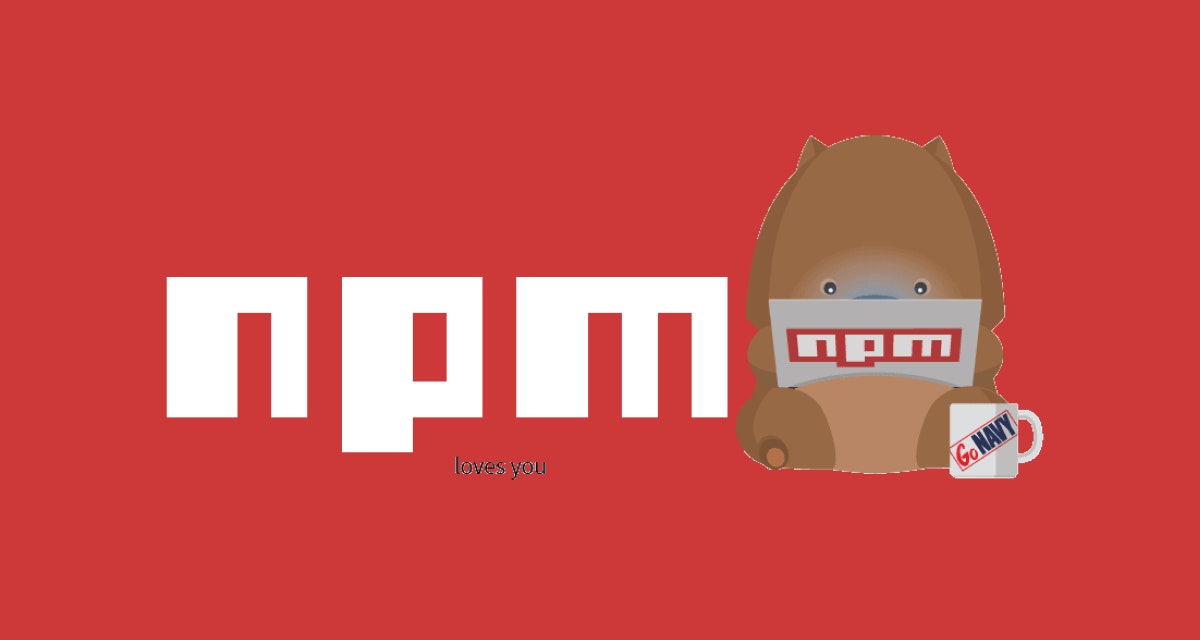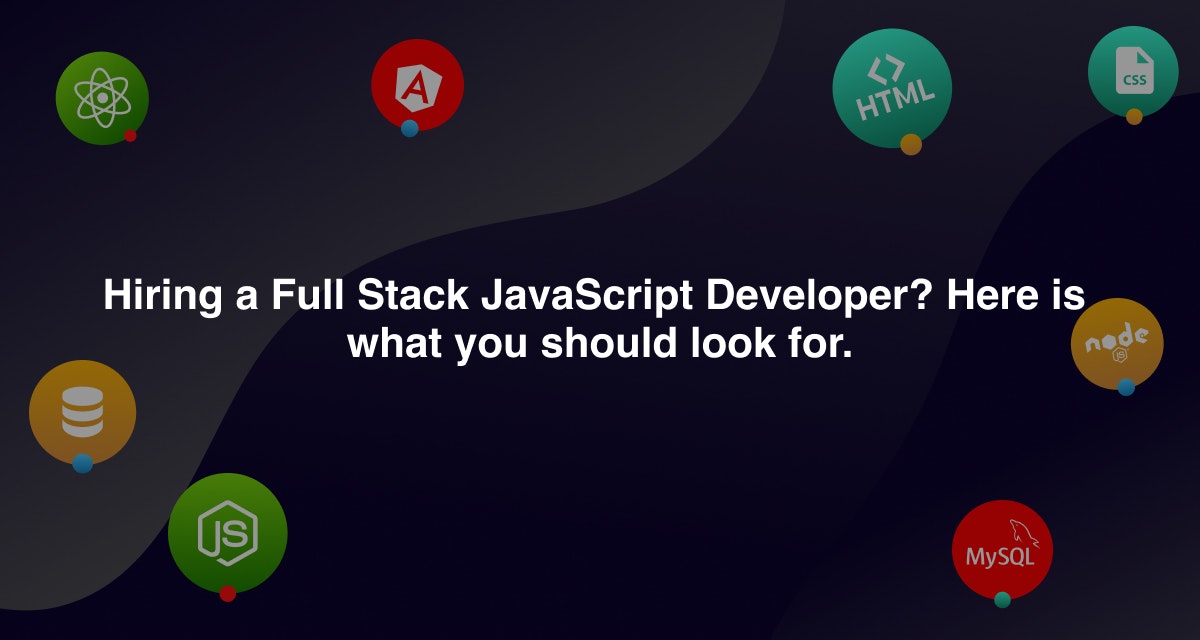Have you been tasked to develop or revamp the website for your company? That sounds simple enough, doesn't it? But hey - when you start discussing the requirements with a developer, they bring up complex-sounding terms such as "Web application architecture." Scary!
However, the thing is, the internet is not about static web pages and longer loading times anymore. Over time, it has evolved into a network that delivers active web user engagement by employing attractive and dynamic web applications.
No wonder developers today focus on the technology behind when you search for a web page on the internet.
So, imagine just typing out the company name or your query in the search bar and within seconds be presented with an array of results on the browser.
How does that happen? Is it radio signals? Or are Oompa Loompas working the scene? It's neither. What makes it possible for you to browse through and view anything on the internet and read this guide right now is web application architecture.
But before you dive into the comprehensive guide, let's first touch-base with basics:
Table of Contents
What are web apps?
They are software applications that run on a web server and are accessed by the users through a web browser (such as Google or Bing) via an active internet connection. Famous examples of web apps include Google Apps, Microsoft 365, AOL Mail.
A web app's frontend is created using languages like Javascript, CSS, HTML, and backend services with any programming stack such as MEAN and LAMP. Unlike mobile apps, there is no specific SDK for building them.
Now that you know what a web app is, it'll be easier to understand what web application architecture means.
What is web app architecture?
Don't worry - it isn't as scary as it sounds. It's merely how most devices, connected to an internet network, communicate with each other and you! To better grasp the concept, let us study an example:
You come across a brand new website (of a project management tool), and you want to create an account on it. When you click on the Sign-Up button, you are redirected to a page where you enter your information. After that, you are taken to the dashboard section of the tool.
In this example, the Sign Up form is on the client-side, where your data was collected from you. All other actions, such as adding you to the database, verifying your email address, redirecting you to different web pages, happen on the backend of the project management tool's website.
Web application architecture is a framework that consists of all interactions between the web app components such as user interfaces, the database servers, load balancers, and so on. It helps and supports website growth by catering to its ever-growing requirements.
Web app architecture diagram
Here's how you can define the web application architecture diagram by listing down its process:
- The user sends a command to the server using the browser or the web app interface.
- The web application server forwards the command to the requested server.
- The server fetches results for the requested command through data processing or querying (in most cases, it is the homepage of a website).
- The web application then delivers the processed information (e.g., website URL or search results) to the server.
- The server ultimately providers the user with the requested information.
The below-mentioned web app architecture diagram has all the steps belted out visually. Have a look:
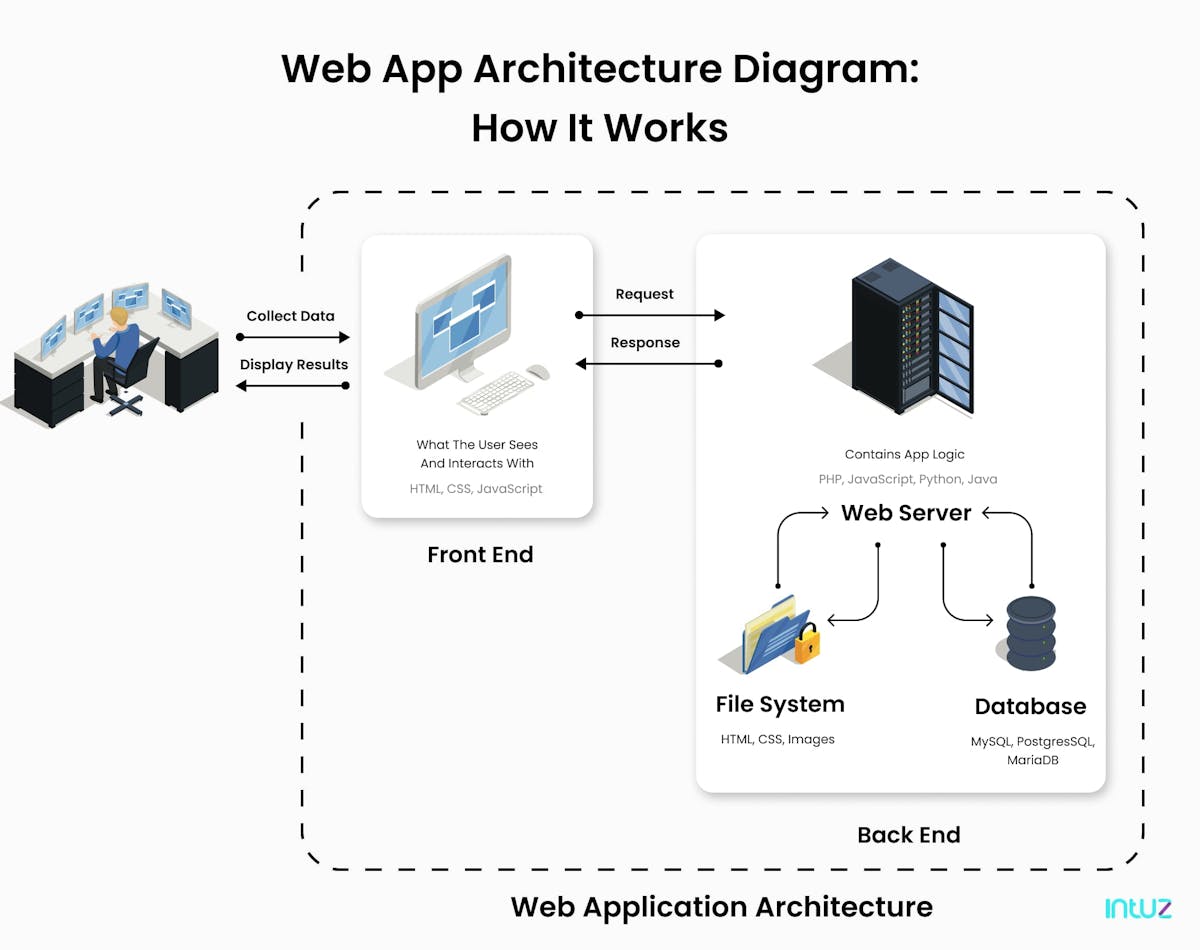
Fundamentals of web application architecture
Behind every web application are server-side code and client-side code, which, in turn, are an essential part of the clean architecture that runs the app. The server-side code is written using programming languages such as PHP, Python, JavaScript, and Ruby.
It is responsible for creating the pages requested by users and collecting and storing data such as user account information and browsing behaviors.
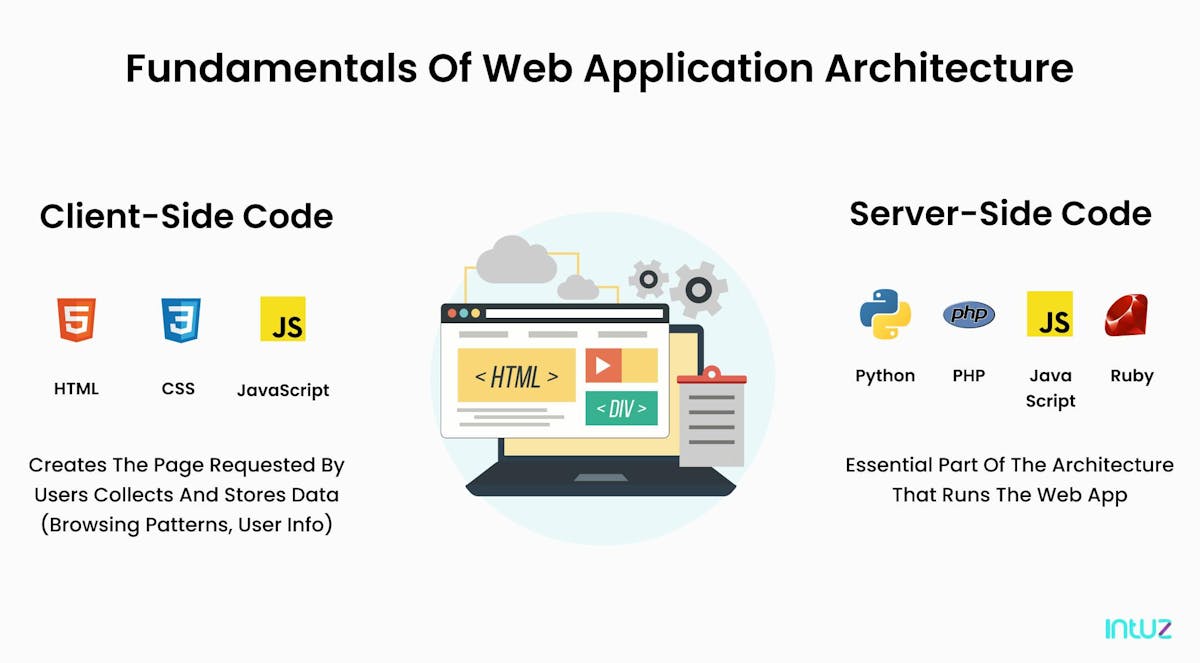
The client-side code is written by combining HTML, JavaScript, and CSS. It reacts to user queries and inputs by communicating via HTTP requests and cannot read files off a server directly
The architecture of a web app is made of different application components that enable it to work efficiently. But what are its components? Let's find out:
Components
Web application architecture is an excellent web development solution for businesses that want to create an impeccable user experience using unique programming languages.
Below mentioned are X components of web application architecture:
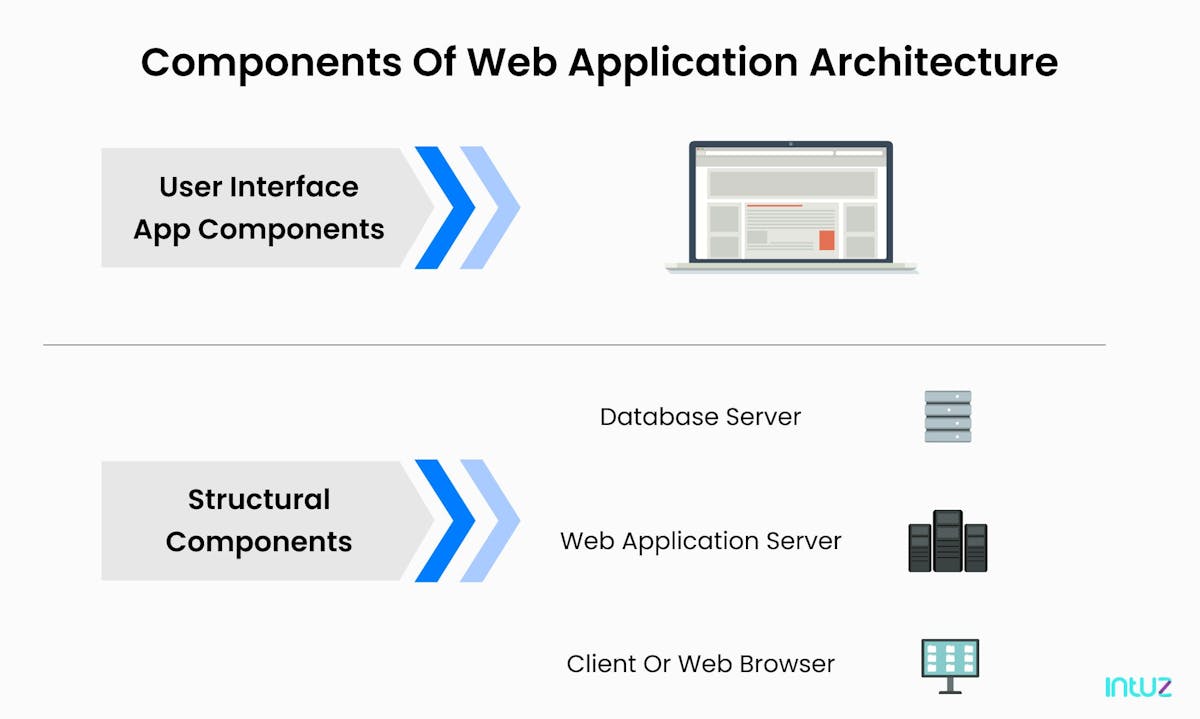
1. UI/UX
The user interface app components include statistical data, desktop notification elements, activity logs, dashboards, and account settings. They are responsible for creating the visuals of a web page and lay the foundation for user experience.
2. Structural
Structural components determine a web app's functionality that allows users to control, maintain, and interact with databases. The multi-tier architecture comprises three sections:
- Database server which fetches, stores, and provides information to the users.
- Web application servers work as a central hub for the business logic and multiple web app layers. It is developed with the help of Python, Ruby, .NET, Node.JS web, and Java.
- Client or web browser that enables the users to interact with the web app using the functions. It is developed with HTML, CSS, and JavaScript. As it exists within the web browser, there is no need for a device or operating system-related adjustments.
Types of web application architecture
Now that you know a web application architecture defines how various web app components interact, the end goal of creating an integral web app depends on how the app logic is distributed among the server and client sides.
Let's take a look at six web app architecture type:
1. Single-page application (SPA)
In this day and age, a single-page application is most-sought after as it offers an interactive user experience. Instead of loading new pages from the server each time a user takes action, SPAs permit a more dynamic user interaction by providing updated content to the current web page.
SPAs are designed to request the most necessary content elements, thus not requiring much application support during development process. AJAX, a JavaScript/XML technique for creating fast and intuitive web pages, is responsible for enabling page communications and making single-page apps a reality.
You must use Facebook, Gmail, Google Drive, and Twitter on a regular basis? Well, all these are examples of a single-page application.
2. Microservices
The components used for in this lightweight architectural pattern isn't directly dependent on each other instead of a single monolithic software application.
That's how developers can speed up the deployment process and roll out web apps faster and with greater efficiency. In these types of web application architecture, each microservice can be developed independently, sometimes, in a different programming language, and run on their own.
Moreover, each microservice architecture aims to satisfy a specific business or user requirement you are working on. It is an ideal type of web application architecture because it helps support multiple platforms and devices across the cloud, IoT, and mobile.
Amazon, Uber, Etsy, and Netflix are some of the most innovative and profitable companies across the globe that have adopted the microservices architecture.
3. Serverless architecture
These types of web application architecture allow the execution of the app code logic without worrying about infrastructure-related tasks.
In such a scenario, developers don't manage the backend server; instead, they outsource server and infrastructure management to a third-party cloud infrastructure services provider.
This type of web application architecture is ideal when you don't want to manage or support the servers along with the hardware you have developed the web app for.
4. Progressive web application (PWA)
The most recent and popular trend in web app development is PWAs. A progressive web app looks like a web app, but it has the benefits of a native mobile app. Washington Post, Twitter, and Flipkart are a few brands that converted their websites into a PWA.
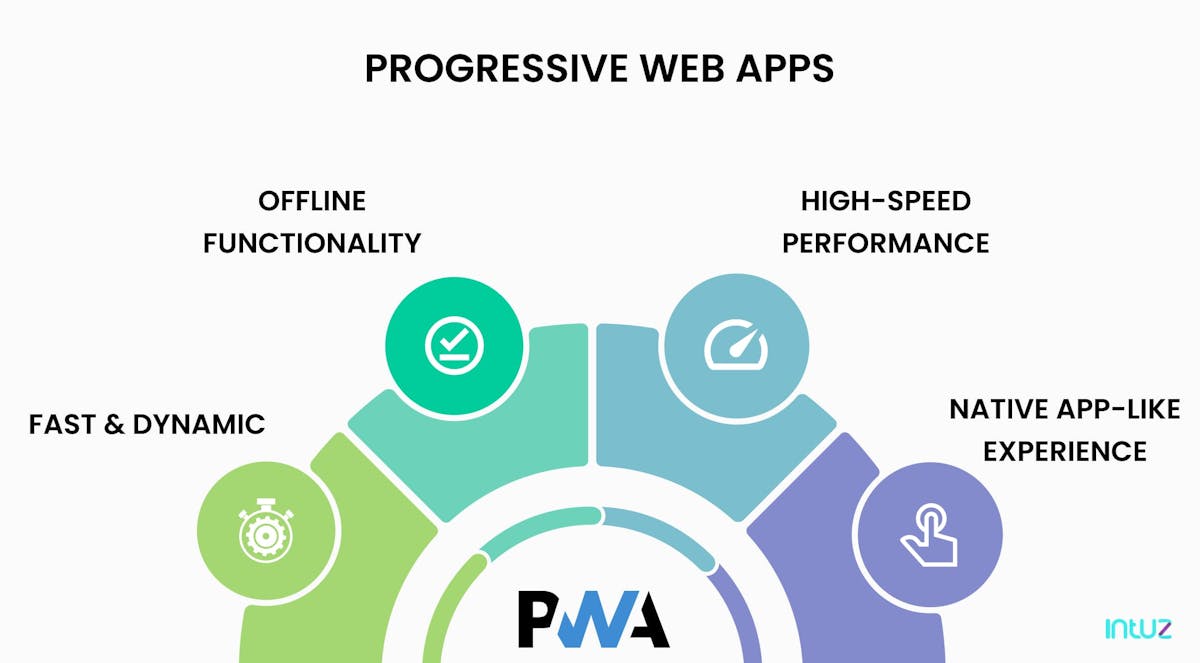
Progressive web app is architected around an app shell containing the local resources a web app needs to load the skeleton of the user interface and populates with content using JavaScript. That's the reason PWAs can work offline by using the data cached during the last internet interaction.
Moreover, PWAs evolve from pages in browser tabs. This is done by enticing native apps to implement ordinary JavaScript and HTML and creating a native-like experience.
Developing web apps with high-speed performance and offline functionality depends on the client-side storage API, such as IndexedDB and Cache Storage API.
5. Widget web application architecture
Real-time widget updates a norm; this type of architecture is mobile-friendly, dynamic, and famous for allowing the user to load data without reloading a web page!
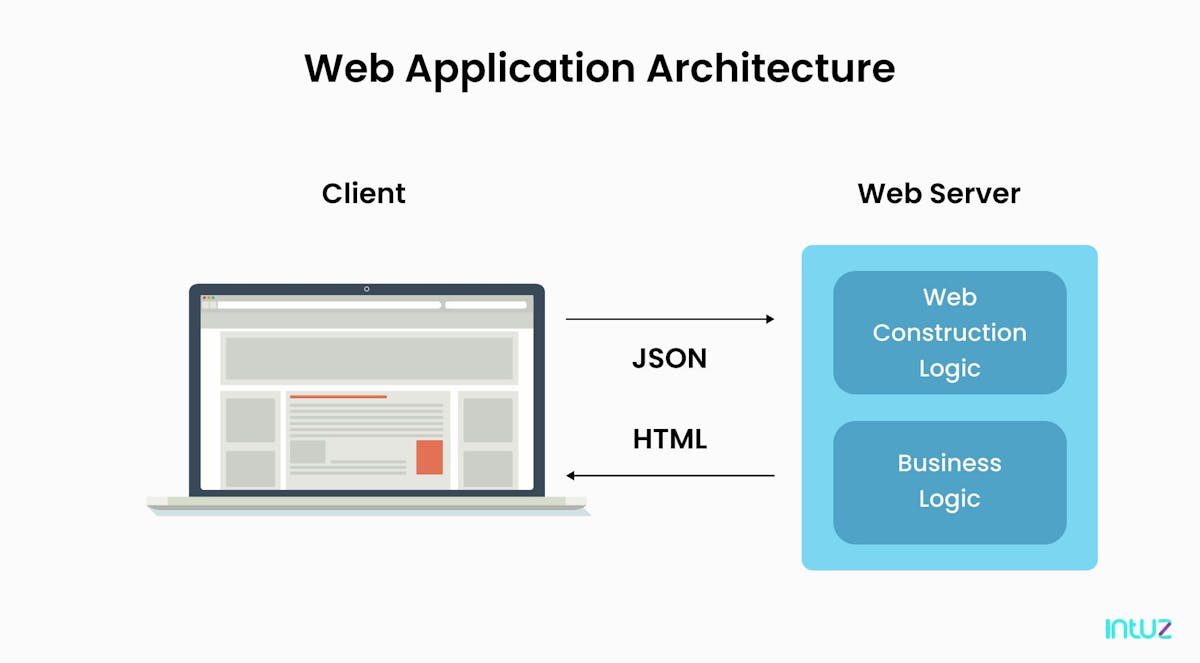
Since AJAX queries fetch and send copious amounts of data in JSON and HTML, that's what makes this type of web application architecture perfect for mobile apps. However, it also requires the longest development time.
6. Legacy HTML web application architecture
This type of architecture is based on a single logic, i.e., the user gets the entire HTML on request. All the other elements (and components) accordingly react to the full load of the page. Although legacy HTML is an excellent option for static pages, it is not suitable for dynamic web apps.
Renditions of web application architecture
With the tech world continuing to evolve rapidly, web application architecture has also improved its frontend and backend development capabilities in the past decade. Mentioned below are the two most popular web application architectures:
1. Server-side rendering (SSR)
Whenever you visit a website by clicking a URL, a request is sent to the server. It is only after the request gets processed that the browser receives and renders the files (javascript, CSS, and HTML) and the web page's content. If you decide to go to another page, another request is made to the server.
In this type of framework, the web app renders quickly, thereby giving you the chance to view the application layout before it becomes fully interactive. SSR works pretty fast under a reliable internet connection. It is great for static sites where you don't have a lot of dynamic content.
However, since SSR makes full page reloads and frequent server requests, it loads on fundamental site interactions.
2. Client-side rendering (CSR)
When you visit a website using CSR by clicking a URL, only a single request is made to the server to load the web app's main skeleton and generate the content using Java-based web application architecture. CSR is perfect for rich site interactions and web applications.
After the initial load, the website becomes very fast. However, in most cases, CSR requires an external library, making the initial page load slow.
All you need to know is which front-end framework suits you the best
Tour to the guideWhen you visit a website using CSR by clicking a URL, only a single request is made to the server to load the web app's main skeleton and generate the content using Java-based web application architecture. CSR is perfect for rich site interactions and web applications.
After the initial load, the website becomes very fast. However, in most cases, CSR requires an external library, making the initial page load slow.
Web server vs. app server architecture
Although no standard documents are defining web servers and servers' properties, both are deployed together to serve a common purpose, i.e., fulfilling user requests for content from a web page. Let us understand the concepts in detail:
a. Web server
A web server's primary job is to accept and work upon the requests from internet users for static content from a website (HTML pages, images, files, videos, and so on). Since the command is almost always made through a browser or mobile application, the request takes the form of an HTTP message.
b. App server
The app server's primary purpose is to serve the right business logic to the app programs using various protocols such as HTTP. It's a software architecture that facilitates both enterprise-based and web-based apps suited for serving both static and dynamic content and application transfer from one device to another.
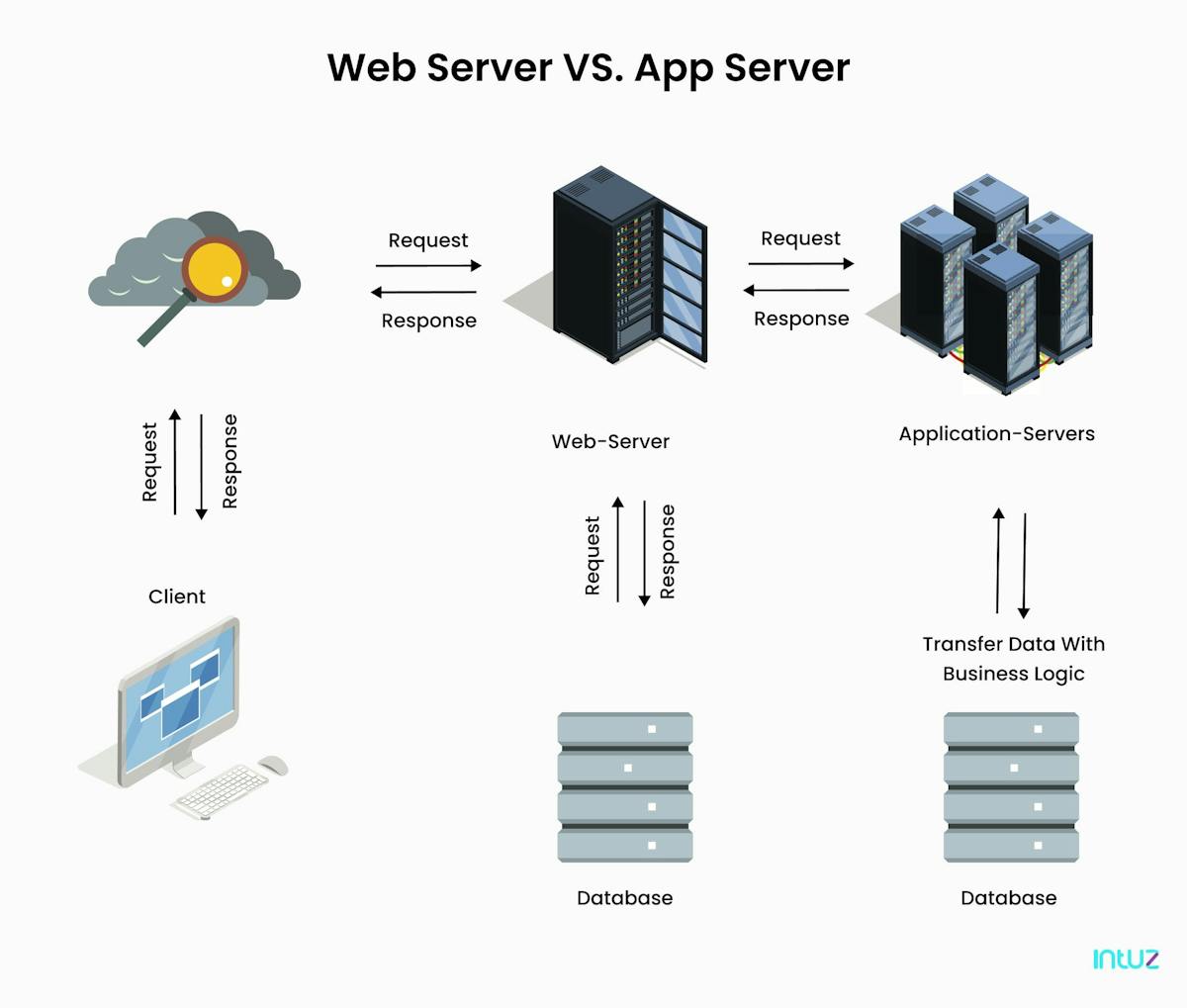
What is the difference between the two servers?
1. Multi-threading process
Web servers respond to requests from one connection at a time. That means it doesn't support multi-threading. However, app servers use multi-threading to help multiple requests in parallel.
The framework also supports additional features such as connection pooling, load balancing, isolation pooling, clustering, and more. The ultimate task of using threads is to improve the computational speed, which doesn't happen with web servers.
2. Main syntax or server basics
Web servers deploy programming that conveys administrations or substance to internet users. It is similar to a program regarding the approaching system that demands web assets over HTTP convention and furthermore.
The app server is a part-based programming structure that encourages improving and running online applications. This means it intends to give suitable business logic to apps as a center-level server program.
3. Resource intensiveness
Web server facilitates website traffic, which is not very resource-intensive. However, app servers enable longer running processes that are resource-intensive. It just improves the overall functionality of the web app.
4. Content management
The web server delivers static content using the HTTP protocol only, whereas the app server provides dynamic content by exposing business logic to the clients using several protocols (including HTTP). It is a software framework that enhances the interactive parts of a web app that can appear differently based on the request's context.
5. Varying usage
For managing mails or downloaded requests for FTP files to publish a web page, the web server uses HTTP protocol based on the internet and intranet-related programs. It is designed to be used alone or as a component of the app servers.
However, app servers can do anything that a web server can, and they are capable of creating dynamic content to serve both web-based apps and enterprise-based apps. All in all, modern web app architecture is made of a solid foundation, and it shows!
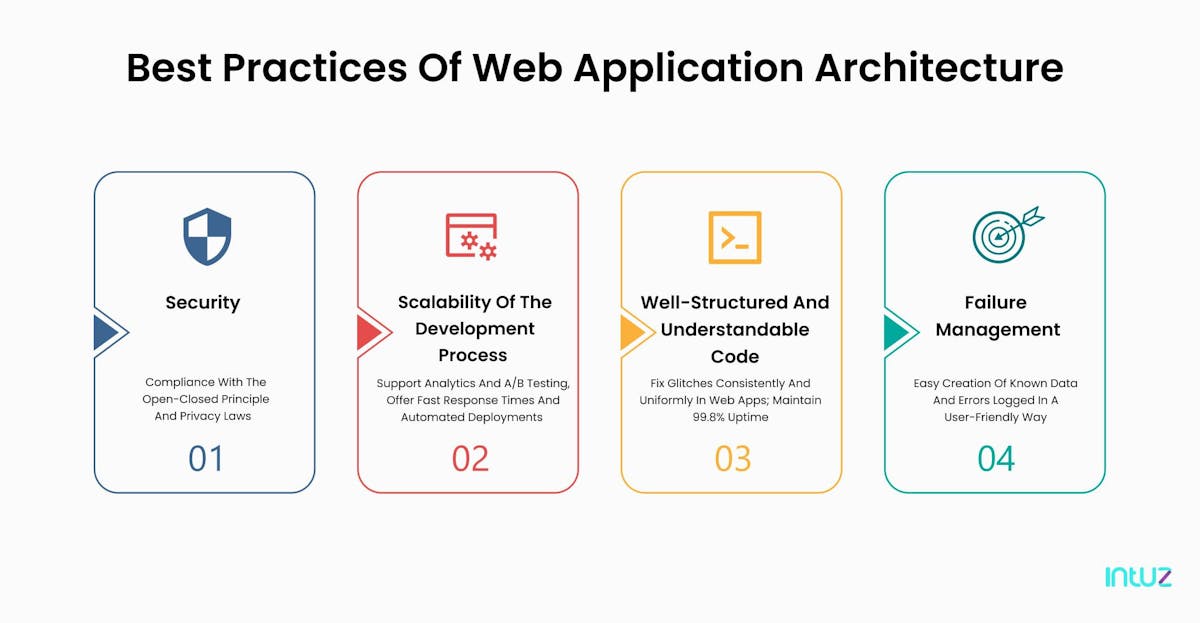
Best practices of web application architecture
You may have an excellent working web app; however, that’s not enough. You must also have a modern software architectures to provide an optimal experience to the users. Luckily, in this section, we list down four best practices for you to follow:
1. Security
If the source code isn’t protected, it could leave your web application vulnerable, which is why the application’s architecture should be strong enough to protect sensitive information and be compliant with privacy laws such as HIPAA , GDPR, and more. Utilize proper security initiatives to reduce the chances of malicious penetrations.
2. Separation of concerns
The web application should comprise self-contained and modular components so that adding features and fixing bugs is a lot easier. The modern web application architecture should also solve problems consistently and uniformly and just be as uncomplicated as possible. That way, your web apps will have better than 99.9% uptime.
3. Scalability
It is essential to ensure your modern web app architecture can be scaled horizontally across several servers and regions to handle massive website traffic fluctuations. In this day and age, it also means relying on the cloud as that way, and you only pay in proportion to your bandwidth usage. It should also support the latest standards, including analytics and A/B testing, offer fast response times, and automated deployments.
4. Failure management
Your web app architecture should be designed so that it doesn’t crash, and even if it does, it can heal itself. Moreover, it is essential not to have a single point of failure as they would make rebooting extremely difficult. Your web app multi-tier architecture should also allow for easy creation of known data, and errors should be logged in a user-friendly way.
Every business needs a robust web app architecture!
As the world of the internet continues to evolve, so will the associated technologies and framework. Given the contribution a robust web application architecture makes to access web apps, it is clear that this concept can't be ignored!
Therefore, please ensure that when you build an app, you choose the right architecture that will further enable you to optimize the web app's performance and enhance the chances of fast and secure web-based communication with users.
Focus on parameters such as the robust and secure nature, speed of the web app, and how it's responsive. Since your web app has to support increasing business requirements and customer demands, it should introduce new types and methods of accurate web app architecture.
The apt web application architecture paves the way for scalability and expansion plans, also known as an intelligent blueprint, in business-speak.
If you seek an expert software development services provider's assistance to build a web application architecture, contact us at +1 650.451.1499, write to us at getstarted@intuz.com or fill the contact form.


